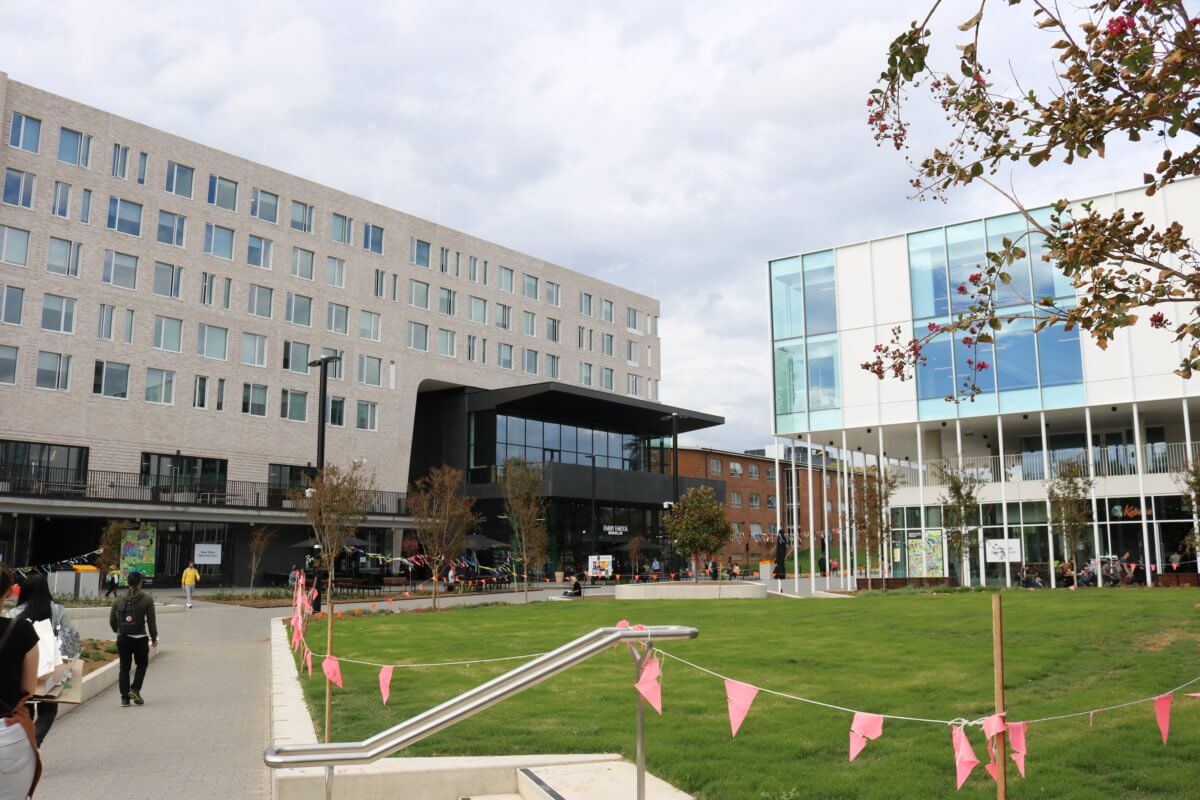A draft booking procedure for Kambri’s Cultural Centre, Marie Reay Teaching Centre (MRTC), and public outdoor spaces has revealed that student-oriented projects and activities will be subject to high venue fees, with very little in the way of discounts or waivers.
The draft document, acquired by Woroni, lists the commercial prices for the day-long events at the Cultural Centre at $3,500 for “large events” and $1,750 for “small events”. The MRTC “Super Floor” will cost either $2,000 for half-day events or $4,000 for whole-day events.
Declared “public spaces” will also come with a price-tag, with University Avenue costing $3,000 for a whole-day event and $2,000 for a half-day, and the lawn costing $1000 for a whole day and $500 for a half. The yet-to-be-completed Amphitheatre will cost $2,000 for a day’s use, or $1,000 for a half-day.
A key focus, as expressed in both the draft document and previous statements by the ANU, is to ensure that Kambri is attractive to audiences from outside the student body. The draft document itself states the goal of drawing “the broader Canberra audience and interstate visitors to the precinct.”
It is clear from the draft document that commercial viability is not an insignificant concern for those who produced it, with a whole page dedicated to describing Kambri’s “key assets” and how these can be used to “activate the precinct”.
The proposed fee schedule is built around the categorisation of different potential “users of the spaces”. Depending on the category of user, the fees may vary.
Student associations, clubs and societies receive a full waiver of fees for use of 30, 60 and 120 person rooms in the MRTC; however, they receive no such waiver for the use of the MRTC ‘superfloor’ or any of the spaces in the Cultural Centre. They will also have to pay for the use of the “public spaces”, such as University Avenue or the Amphitheatre.
If these student associations, clubs and societies are ANUSA- or PARSA-affiliated, then they could potentially receive a 20% discount. A days use of the Cultural Centre’s Drama Theatre, for example, would then cost the relevant society $1,200. For the same amount of time, use of the Cinema would cost $1,440, and use of the Amphitheatre would cost $1,600.
This 20% discount for “organisations that are ANU affiliated” will not normally apply for non-performing arts activities or activities that are “commercial in nature”. These activities would be subject to the full commercial cost – anywhere between $1,000 and $4,000 per day depending on the space used.
The draft document does, however, recognise “anchor users” – certain groups that “have been considered in the design of the spaces”. These users are limited to the ANU Film Group and the National University Theatre Society (NUTS). While these two groups are granted special allowances in regard to fees, similar clubs and societies – like the ANU Musical Theatre Company – do not enjoy such allowances.
The ANU Film Group does not need to pay a fee for the use of the Cinema for their weekly screenings. However, if any film screening involves the selling of tickets then “the income is to be utilised to cover costs of operating the event”. If an event brings in a profit, then the ANU Film Group will have to pay the discounted cost of using the venue.
NUTS is “encouraged to utilise rooms within the MRTC for rehearsals, practice and meetings that do not require props or use of the Drama Theatre itself”. In the week leading up to a scheduled showing, NUTS will “have access to a weekly rate” of $1,000 for use of the Drama Theatre.
Similar to the Film Group’s use of the Cinema, if any NUTS event makes a profit the Theatre Group must pay the discounted cost of using the venue.
The draft document does clarify that any event hosted in Kambri must have an “ANU affiliated event sponsor”, such as ANU departments, colleges, or student associations. However, the Kambri Precinct Managers themselves – Sydney based agency Wiltshire and Dimas – are also included in the list of affiliated sponsors.
*Editor’s note (29/03/19): An earlier version of this article stated that the document was produced by firm Wiltshire + Dimas. This article has since been amended to correct this. We apologise for this error.
The ANU has not confirmed the authenticity of the document.
ANU have been reached for comment, but did not provide one at the time of publication of this article.
We acknowledge the Ngunnawal and Ngambri people, who are the Traditional Custodians of the land on which Woroni, Woroni Radio and Woroni TV are created, edited, published, printed and distributed. We pay our respects to Elders past and present. We acknowledge that the name Woroni was taken from the Wadi Wadi Nation without permission, and we are striving to do better for future reconciliation.
